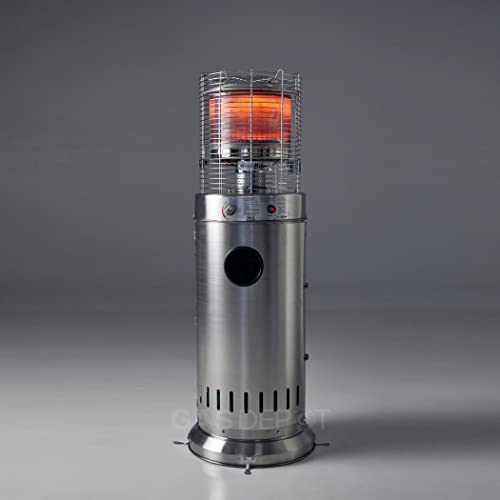Garden Heating Solutions: Enhancing Outdoor Spaces Year-Round
As seasonal modifications bring varying temperature levels, garden enthusiasts deal with the obstacle of maintaining their valued outdoor areas. Whether for cultivating plants, entertaining visitors, or just delighting in the fresh air, garden heating solutions are crucial to maximizing satisfaction and functionality. This short article checks out numerous options readily available for heating gardens, consisting of conventional and modern solutions, their advantages, and practical pointers for execution.
Comprehending the Need for Garden Heating
A well-kept garden should be a year-round sanctuary, providing reprieve in both summer and winter. The need for garden heating arises from:
- Frost Protection: Certain plants, especially tender ranges, require protection from frost to endure cooler months.
- Extended Growing Seasons: Heating solutions can enable for earlier planting in spring and later on harvesting in fall.
- Convenience Optimization: Outdoor events and activities can happen more conveniently with regulated temperatures.
Types of Garden Heating Solutions
Garden heating solutions can be divided into several categories based upon their innovation and fuel source. Here's an in-depth look at some popular options:
1. Electric Heaters
Electric heaters are a versatile option for smaller sized gardens and patios. They are simple to install and run, providing immediate heat with very little effort.
- Types of Electric Heaters:
- Patio Heaters: Freestanding systems with a heating element that radiates warmth.
- Wall-mounted Heaters: Ideal for little spaces; these heaters save ground space while offering warmth.
- Portable Electric Fans: Great for targeted heating in particular areas.
2. Gas Heaters
Gas patio heaters are a standard option for outdoor heating and are extensively valued for their effectiveness and aesthetic appeal.
- Types of Gas Heaters:
- Propane Heaters: Easy to transport and set up, appropriate for the majority of outdoor settings.
- Gas Heaters: Permanent components, ideal for locations with existing gas lines.
3. Wood-burning Solutions
For a rustic touch, wood-burning solutions such as fire pits and chimineas include warmth and ambiance to gardens.
- Benefits and drawbacks of Wood-burning Heating:
- Advantages: Aesthetic appeal, social environment, and reliable heat distribution.
- Drawbacks: Requires more upkeep, management of ashes, and prospective fire risks.
4. Infrared Heaters
Infrared heaters utilize infrared radiation to directly warm objects, making them energy-efficient and ideal for outdoor areas.
- Advantages: Immediate heat, very little energy loss, and suitability for all weather conditions.
5. Outdoor Heating Mats and Blankets
For smaller patio locations or specific zones in a garden, heating mats and blankets can be an ingenious option to provide an extra layer of heat.
Factors to consider for Choosing a Heating Solution
When choosing the best heating option for a garden, numerous aspects need to be evaluated:
- Garden Size: Larger areas might need several heating sources for efficient warmth.
- Spending plan: Various options exist at different price points. Cost-effectiveness can determine the picked technique.
- Security: Evaluate the security functions of the heating options, particularly when utilizing gas or wood-burning solutions.
- Aesthetic Appeal: Integration with garden design can improve total visual enjoyment.
Table 1: Comparison of Garden Heating Solutions
| Type | Setup | Fuel Source | Effectiveness | Cost |
|---|---|---|---|---|
| Electric Heater | Easy | Electricity | Rapid/Immediate | Moderate |
| Gas Heater | Moderate | Propane/Natural | High/Effective | Moderate to High |
| Wood-burning Option | Moderate/Hard | Wood | Efficient | Low to Moderate |
| Infrared Heater | Easy | Electrical energy | Immediate | Moderate to High |
| Heating Mats/Blankets | Easy | Electricity | Targeted | Low to Moderate |
Implementing Garden Heating Solutions
To ensure efficient heating in outdoor settings, a strategic approach is needed. Here are some useful tips:
- Evaluate the Layout: Consider the garden design to determine locations where heating is most needed.
- Select Multidirectional Heaters: This will help disperse heat more equally throughout the space.
- Enhance Insulation: Utilize windbreaks (like garden walls) or heat-retaining materials around the heating setup.
- Include Decor: Attractive designs of heating units can improve the garden's ambiance while offering heat.
- Regular Maintenance: Ensure that heaters (particularly gas and wood-burning) are maintained for ideal performance and security.
FAQs About Garden Heating Solutions
1. How safe are electric heaters for outdoor usage?
Electric heaters created for outdoor use are generally safe when installed properly. Always follow manufacturer guidelines and security instructions to mitigate dangers.
2. Can I leave my gas heater outside throughout winter season?
While numerous gas heaters are developed for endurance outdoors, it's advisable to cover them or store them inside to safeguard them from extreme weather condition conditions.
3. Exist energy-efficient options for heating my garden?
Yes! Infrared heaters and heating mats are particularly energy-efficient as they focus heating in specific areas instead of warming the surrounding air.
4. What are the finest plants to grow in a warmed garden?
Popular options include tomatoes, herbs, peppers, and other tender plants that flourish in temperature levels above 50 ° F (10 ° C).
Garden heating solutions exceptionally boost outdoor areas, enabling year-round satisfaction and optimized plant development. By comprehending Gas Patio Heaters of heating options available and making informed options based upon personal choices and particular garden conditions, garden enthusiasts can change their outdoor locations into relaxing retreats, despite the season.

